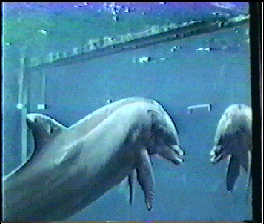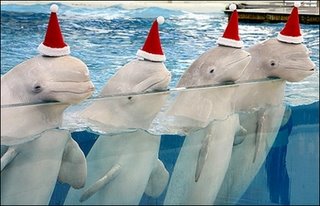
CREDIT: COURTESY OF JOSHUA PLOTNIK, FRANS DE WAAL, AND DIANA REISS
Three videos. Must See.
Dr. Reiss did similar experiments with
mirrors and dolphins, a few years ago. Dr. Reiss is a world leader in animal intelligence and communication research. Dr. Reiss is on the scientific board of Dr. Denise Herzing et al.
Wild Dolphin Project, a collaborator of the free
Seadragon software project for dolphin communication research.
http://news.yahoo.com/s/ap/20061031/ap_on_sc/self_aware_elephantHere's a similar experiment with
mirrors and apes. Frans B. M. de Waal

was a main researcher in both the elephants and apes mirror experiments. While Dr Reiss was a main researcher in both the elephants and dolphins mirror experiments. Dr Reiss' dolphins mirror experiment with Dr Lori Marino was probably the first of its kind to be recognized by mainstream science.
Science 3 November 2006:
Vol. 314. no. 5800, p. 735
DOI: 10.1126/science.314.5800.735d
Very few creatures have the cerebral wherewithal to recognize themselves in a mirror: humans, apes, dolphins, and now--elephants.
Joshua Plotnik, a psychology graduate student at Emory University in Atlanta, Georgia, and colleagues put a jumbo-sized mirror in the elephant enclosure at New York City's Bronx Zoo and watched the reactions of three adult female Asian elephants. All showed signs of self-recognition: One, for example, used the tip of her trunk to explore her mouth in the mirror. Another passed the gold standard "mark test" for self-recognition, using her trunk to examine a white X painted on her forehead, the researchers reported online this week in the Proceedings of the National Academy of Sciences.

Such self-awareness, says Plotnik, may be part of a more general ability to distinguis

h one's self from other individuals, which in turn may be needed for the altruistic behavior observed among elephants in the wild. The study "shows us that so many more species may be capable of these complex abilities if we figure out the right ways of asking the questions," says parrot-studier
Irene Pepperberg, who teaches comparative psychology at Harvard University.















